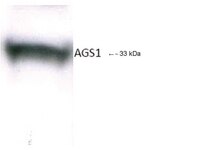Argonaute2 mediates compensatory expansion of the pancreatic β cell.
Tattikota, SG; Rathjen, T; McAnulty, SJ; Wessels, HH; Akerman, I; van de Bunt, M; Hausser, J; Esguerra, JL; Musahl, A; Pandey, AK; You, X; Chen, W; Herrera, PL; Johnson, PR; O'Carroll, D; Eliasson, L; Zavolan, M; Gloyn, AL; Ferrer, J; Shalom-Feuerstein, R; Aberdam, D; Poy, MN
Cell metabolism
19
122-34
2014
Show Abstract
Pancreatic β cells adapt to compensate for increased metabolic demand during insulin resistance. Although the microRNA pathway has an essential role in β cell proliferation, the extent of its contribution is unclear. Here, we report that miR-184 is silenced in the pancreatic islets of insulin-resistant mouse models and type 2 diabetic human subjects. Reduction of miR-184 promotes the expression of its target Argonaute2 (Ago2), a component of the microRNA-induced silencing complex. Moreover, restoration of miR-184 in leptin-deficient ob/ob mice decreased Ago2 and prevented compensatory β cell expansion. Loss of Ago2 during insulin resistance blocked β cell growth and relieved the regulation of miR-375-targeted genes, including the growth suppressor Cadm1. Lastly, administration of a ketogenic diet to ob/ob mice rescued insulin sensitivity and miR-184 expression and restored Ago2 and β cell mass. This study identifies the targeting of Ago2 by miR-184 as an essential component of the compensatory response to regulate proliferation according to insulin sensitivity. | 24361012
 |
Argonaute2 regulates the pancreatic β-cell secretome.
Tattikota, SG; Sury, MD; Rathjen, T; Wessels, HH; Pandey, AK; You, X; Becker, C; Chen, W; Selbach, M; Poy, MN
Molecular & cellular proteomics : MCP
12
1214-25
2013
Show Abstract
Argonaute2 (Ago2) is an established component of the microRNA-induced silencing complex. Similar to miR-375 loss-of-function studies, inhibition of Ago2 in the pancreatic β-cell resulted in enhanced insulin release underlining the relationship between these two genes. Moreover, as the most abundant microRNA in pancreatic endocrine cells, miR-375 was also observed to be enriched in Ago2-associated complexes. Both Ago2 and miR-375 regulate the pancreatic β-cell secretome, and by using quantitative mass spectrometry, we identified the enhanced release of a set of proteins or secretion "signatures " in response to a glucose stimulus using the murine β-cell line MIN6. In addition, the loss of Ago2 resulted in the increased expression of miR-375 target genes, including gephyrin and ywhaz. These targets positively contribute to exocytosis indicating they may mediate the functional role of both miR-375 and Ago proteins in the pancreatic β-cell by influencing the secretory pathway. This study specifically addresses the role of Ago2 in the systemic release of proteins from β-cells and highlights the contribution of the microRNA pathway to the function of this cell type. | 23358505
 |
Ras dexamethasone-induced protein 1 is a modulator of hormone secretion in the volume overloaded heart.
McGrath, MF; Ogawa, T; de Bold, AJ
American journal of physiology. Heart and circulatory physiology
302
H1826-37
2012
Show Abstract
Because of the crucial role of the endocrine heart in maintaining homeostasis, considerable effort has been focused on the elucidation of the mechanistic underlying gene expression and secretion of the cardiac hormones atrial natriuretic factor (ANF) and brain natriuretic peptide (BNP). However, much remains to be determined regarding specific molecular events involved in cardiocyte secretory function. In this work, we identified genes involved in the transcriptional response of the endocrine heart to volume overload (VO) and signaling pathways involved in its regulation. To this end, the cardiac atrial and ventricular transcriptomes were analyzed in the heart of rats subjected to experimentally induced aorto-caval shunt VO. Pathway analysis revealed unique gene expression profiles in the VO atria for G-protein signaling, notably a significant downregulation of Ras dexamethasone-induced protein 1 (RASD1). In vitro, knockdown of RASD1 in the atrial-derived HL-1 cells, significantly increased ANF secretion. Concurrent knockdown of RASD1 and its effectors Gα(o1) or Gβ(1)γ(2) abrogated the endocrine response, demonstrating a previously unknown negative modulator role for RASD1. RASD1 thus emerges as a tonic inhibitor of ANF secretion and illustrates for the first time the concept of inhibitory protein regulators of ANF release. The novel molecular function identified herein for RASD1 is of considerable importance given its therapeutic implications for cardiovascular disease. | 22408026
 |














